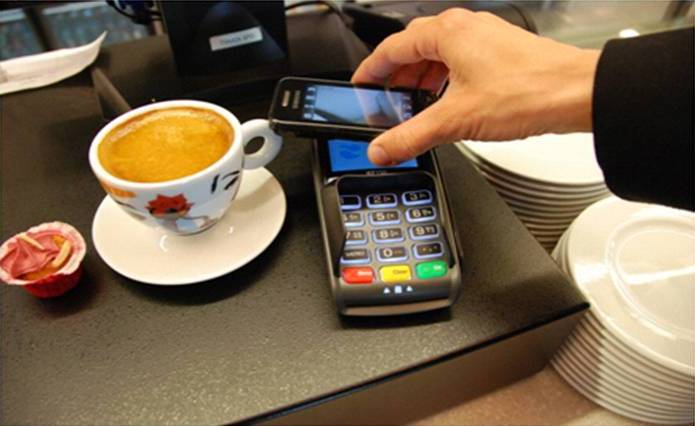
** PRESS RELEASE **
Bad for business?
Frequent bank branch users in Singapore more likely to switch banks
Singapore, 21 December 2015 – The writing is on the wall: consumers in Singapore view having to use bank branches for basic transactions as an inconvenience, which makes them more likely to turn away from their primary bank and flock to more on-demand ways to bank.
Bain & Company, in its sixth annual report on consumer banking behaviors, Mobilizing for Loyalty, asked which consumers would miss more for a day, their mobile phone or their physical wallet. The survey found mobile reigns supreme, with about 60 percent of the 2,500 Singaporean bank customers surveyed choosing their phone over their wallet. That share climbs to nearly 80 percent in China. Further, the survey revealed that those who rely on mobile and digital channels are 40 percent less likely to switch banks versus those who use mobile rarely. Conversely, those who frequently use a bank branch say they are three-times more likely to switch compared to those who rarely use branches. Yet, even as more banking activities go mobile, a major challenge for banks is identifying the right sequence of moves for delighting customers through a great mobile experience, while funding the investments in digital channels through cost reductions in the branch network.
Bain’s research reveals mobile interactions now exceed online interactions in 10 of the 17 countries surveyed, with the Netherlands and South Korea leading the pack and Singapore not far behind. Meanwhile, Japan and Germany lag well behind, due to the high adoption of ATMs and online banking, which provides less incentive for banks in these countries to invest heavily in trying to convert their customers to mobile.
Overall, banks’ investments in mobile are paying off in greater customer loyalty. Mobile apps used for routine transactions are one-third more likely to delight customers as similar transactions in the branch, whereas a routine branch visit is 2.4 times more likely to annoy – a pattern that repeats across many counties, including the U.S., the Netherlands and South Korea.
“As an example, our experience in the U.S. is that 60-70 percent of branch interactions in a typical bank are bad or avoidable,” said Gerard du Toit, lead author of the research and a Bain partner. “So, most of the time a branch visit results in an inferior customer experience and comes at a higher cost for the bank. Clearly, the branch as currently configured is headed for extinction.”
As such, some banks have been trying to shift routine transactions, such as deposits and cash withdrawals, away from their branches and into digital self-service channels instead, but progress is varied. For example, Mexico has more than six times the number of routine transactions per respondent compared to the Netherlands.
For the average bank, the most critical first step is to focus on improving the mobile experience – make it fast, intuitive, convenient and capable of handling basic needs to delight the customer. In many cases, this means forgoing the website for the mobile app.
“Just because you build a mobile app doesn’t mean customers will come,” said Harshveer Singh, partner in Bain’s Financial Services Practice in Southeast Asia. “Banks need to take deliberate actions to inform customers about the app’s benefits and encourage adoption at every opportunity.”
Next, banks must improve on their product sales capabilities:
- More than 60 percent of buyers in Singapore used both digital and traditional channels for their research and purchase.
- In Singapore, nearly 14 percent do their product research through mobile, and 14 percent actually buy through mobile.
“To make the product research and purchase experience shine on a mobile device, the products themselves must be reworked to make them easier to understand. The internal processes must also be overhauled to simplify the chain of activities,” said du Toit. “This is essential to stemming the ‘hidden defection’ issue we detailed in last year’s report – more than one-third of existing customers bought a product from a competing bank during the year.”
- To succeed in banking, Bain identifies six new capabilities that bank organizations must have:
- Extraordinary design discipline, given the small screen, slow speed of accurate typing and impatient users
- Radical simplification of products, processes and communications
- Personalization powered by good data and analytics so that only relevant information is displayed to the user
- Contact methods that allow for anytime, anywhere chat and video calls with fast authentication
- Much faster development cycles to keep pace with new functionality and consumer expectations
A new operating model that provides organizational agility, based on breaking down barriers that divide internal departments and a willingness to collaborate externally To receive a copy of the report or arrange an interview with Mr. Singh contact: Susan Renshaw at susan.renshaw@bain.com or +65-6228-1094
About Bain & Company
Bain & Company is the management consulting firm that the world’s business leaders come to when they want results. Bain advises clients on strategy, operations, technology, organization, private equity and mergers and acquisition, developing practical insights that clients act on and transferring skills that make change stick. The firm aligns its incentives with clients by linking its fees to their results. Bain clients have outperformed the stock market 4 to 1. Founded in 1973, Bain has 53 offices in 34 countries, and its deep expertise and client roster cross every industry and economic sector. For more information visit: www.bain.com. Follow us on Twitter @BainAlerts.




